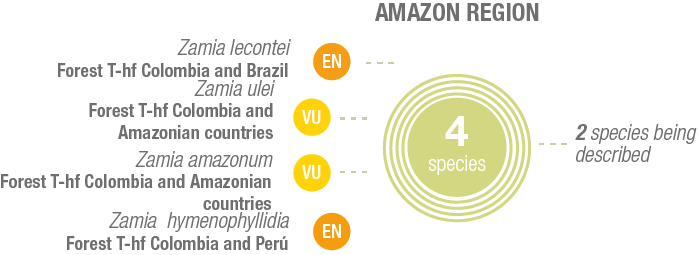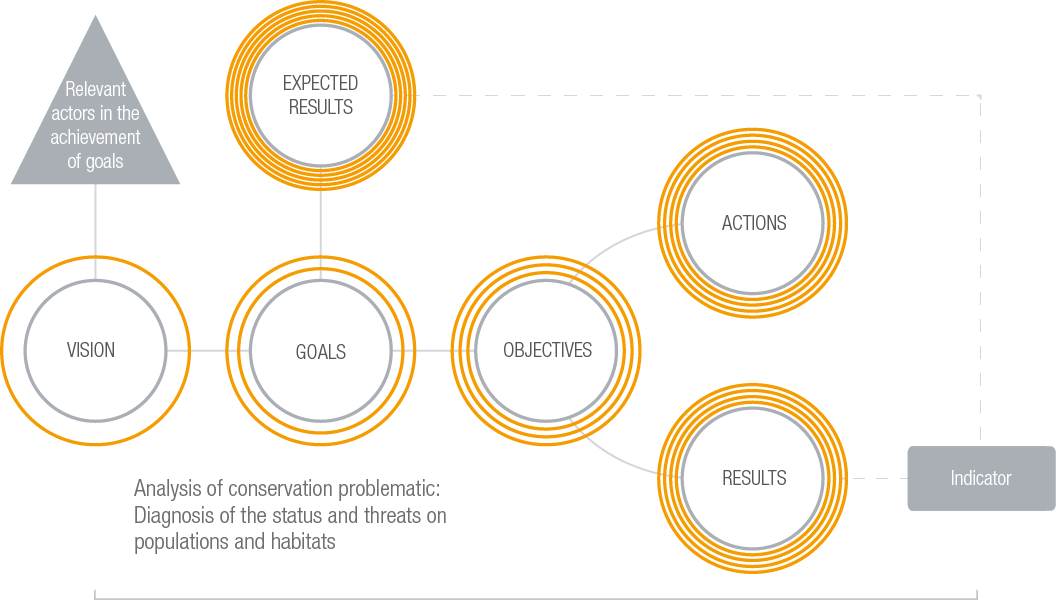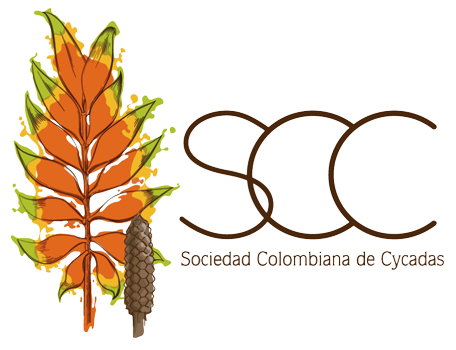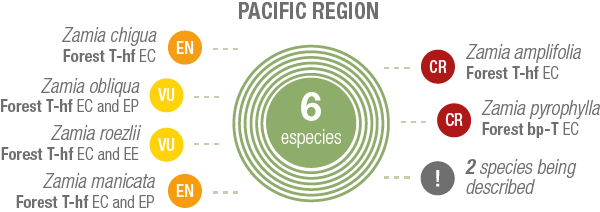Information file: 302
Conservation Plans for Threatened Plants
The tropical cycads of Colombia
The National Strategy for Plant Conservation considers strategic taxonomic groups for the implementation of conservation plans. Such plans derive into specific actions and have captured the attention of important parties to advance in conservation efforts for a great number of species and their habitats.
▲ Read text ▼
Conservation plans define strategic actions and monitor the accomplishment of conservation goals in order to reduce the threats to and improve the status of species or ecosystems1. The plans are complementary to management strategies in areas that are protected or have special management. Since in Colombia there is a huge diversity of plants (more than 26,000 species2) it is not feasible to create conservation plans that comprise all of them. For this reason, the National Strategy for Plant Conservation3 has defined strategic groups to implement conservation plans, which function as umbrella groups and allow for the development of conservation efforts that include a great number of plant species, their habitats, and associated organisms.
One such strategic group are the tropical cycads. With 21 species (and five in the process of description), Colombia is the most diverse country for this group. Tropical cycads in Colombia are distributed in all natural regions, and most are endemic4. Unfortunately, all of these species are in some threat category (according to the second evaluation for the Red List4). Tropical cycads (genus Zamia, family Zamiaceae) belong to the plant group of the cycads (order Cycadales), the most threatened group of plants on the planet and a strategic group for conservation at an international scale5.
Using available information about geographical distribution, population biology, and threats to population and habitats, a detailed diagnosis of the conservation status of each species was developed in order to elaborate a conservation plan for tropical cycads. Then, in discussion with different parties, short and long term (10 years) goals were designed. The goals considered actions of preservation, restoration, sustainable use, management of knowledge, education, and communication, among others4. In this process, not only was relevant information updated but also necessities in knowledge and management were identified. Additionally, a better relationship between different actors such as environmental authorities and institutions interested in plant conservation was stimulated. The conservation plan proposes many actions, including the creation and strengthening of private reserves, restoration of some populations, formulation of programs for sustainable use (ecotourism and horticulture), and an integrated and interconnected management between relevant actors.
As part of this conservation plan, resources have been obtained to advance in actions to protect and restore populations, generate knowledge, and implement a program for monitoring and sustainable use. Conservation plans for plants in the country must be supported, for they are a priority because plants are the basis for terrestrial ecosystems and provide invaluable ecosystem services.

Zamia pyrophylla
Scientific name: Zamia pyrophylla
Critically endangered
Distribution: Forest (T-rf), Pacific
Endemic
Tropical cycads by biogeographical region: Status, threats, and proposed actions

Status and threats
The state of knowledge regarding populations is very poor, yet it is assumed that all species are very common in fragments of forest with low disturbance or protected areas. Two species have few recorded localities and are endangered: (Z. hymenophyllidia y Z. lecontei
Actions
Actions to prevent habitat degradation, and especially to increase the amount of knowledge about species biology and potential threats to populations and habitats are proposed.
Tropical cycads by biogeographical region: Status, threats, and proposed actions

Status and threats
Populations are small and inhabit small forest fragments in landscapes highly degraded by human activities
Actions
Actions to protect populations in forest fragments (public and private protected areas) and restore populations and habitats are proposed. Education, communication, and management programs with relevant parties must be developed to support efforts of protection and restoration. There should also be programs for sustainable use of some species (tourism and horticulture).
Tropical cycads by biogeographical region: Status, threats, and proposed actions

Status and threats
Populations are extremely small and inhabit small forest fragments in landscapes highly degraded by human activities.
Actions
Actions for the preservation of populations in forest fragments (private protected areas) and restoration of populations and habitats are proposed. Education, communication, and management programs with relevant actors must be developed to support efforts of protection and restoration.
Tropical cycads by biogeographical region: Status, threats, and proposed actions

Status and threats
Some species are common in forest habitats with low disturbance or protected areas, but two species have small populations in degraded forest.
Actions
Actions to prevent forest degradation and increase protection and restoration for critically endangered species are proposed. Education, communication, and management programs with relevant actors must be developed to support efforts of protection and restoration. There should also be programs for sustainable use of some species (tourism and horticulture).
8 species are critically endangered (Andean and Pacific regions), 9 species are endangered, and 4 species are categorized as vulnerable (Pacific and Amazon regions).

Zamia pyrophylla
Importance of tropical cycads
Cycads are tropical gymnosperms that represent the most ancestral group of plants with seeds, so they are considered to be living fossils.
Cycads share characteristics with angiosperms, and it is probable that insect pollination, animal seed dispersal, and other ecological interactions appeared in this group of plants for the first time in evolutionary history
Currently, cycads are not very diverse and are highly vulnerable. More than 60 % of cycads around the world are in risk of extinction. They are therefore the group of organisms that are more threatened on the planet.
Species conservation plans
+ The implementation of conservation plans should support conservation management by environmental authorities and other parties.
+ According to the action plan for 2025, tropical cycads will be recognized as a charismatic group to gain support for species conservation and areas of interest for plants4.



 PDF version
PDF version Methods (in Spanish)
Methods (in Spanish) References
References Share
Share